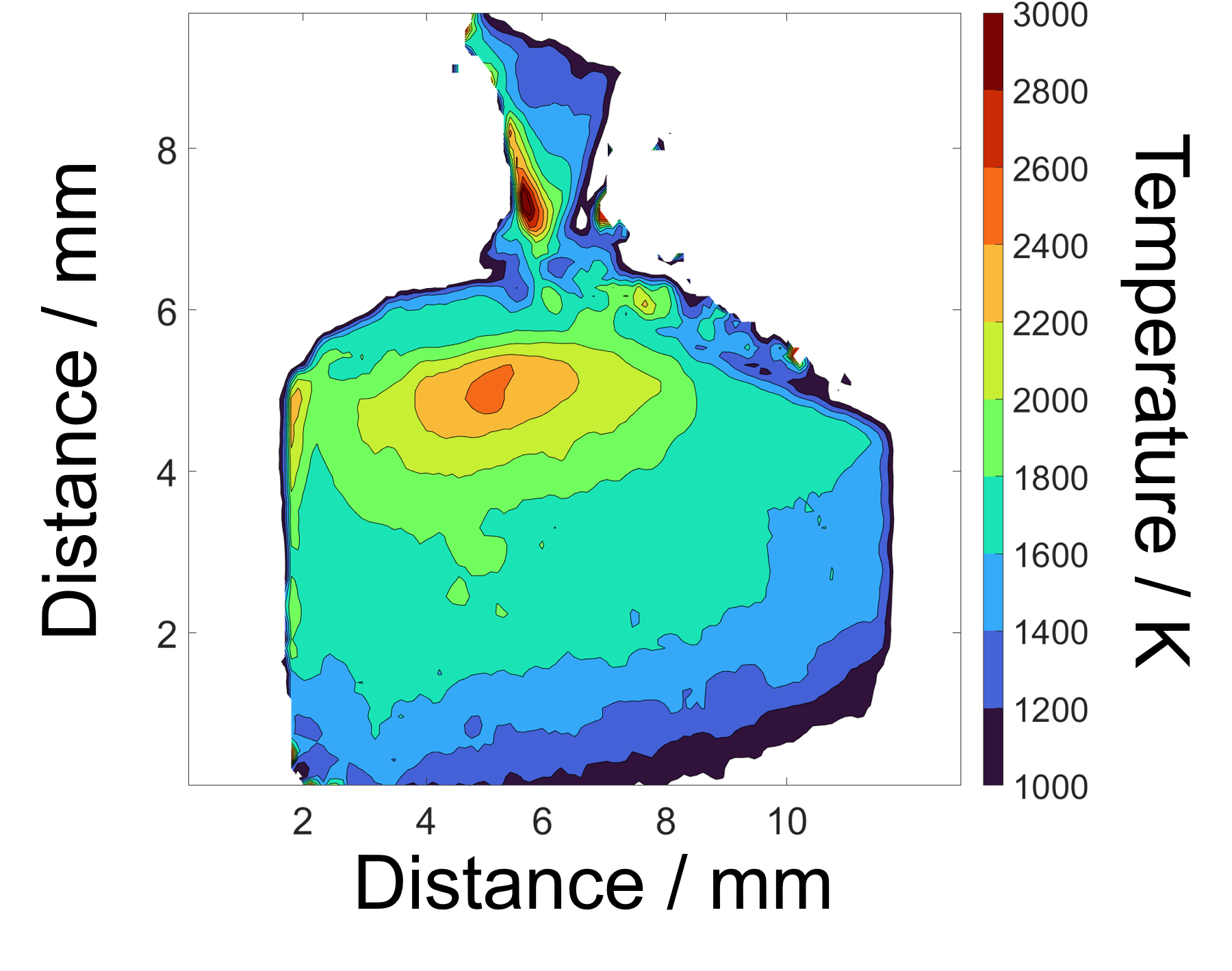High-speed pyrometry imaging

Figure 1. Photo (side view) and the schematic (top view) of the high-speed pyrometry optical assembly

Figure 2. Temperature field of a steel anode measured in the DC arc discharge
|
Laboratory for Plasma Nanosynthesis & Nanofabrication Princeton Plasma Physics Laboratory |

|
High-speed pyrometry imaging
The high-speed 2D 2-colory pyrometry setup developed at PPPL utilizes a high-speed camera (e.g., Phantom v7.3, up to 200,000 fps) for in situ and time-resolved measurements of the electrode surface temperature. The principle of 2-color pyrometry lies in detecting thermal radiation emitted by an object at two distinct spectral bands and determining the temperature from the radiance signals ratio. The diagnostic allows resolving high frequency temperature changes with an accuracy ±50 K between 1000—4000 K. The two-color approach minimizes the error from changing and/or unknown electrode emissivity. Whenever necessary, a high-speed shutter can be used to block reflections from the nearby hot objects (e.g., another electrode) without affecting the electrode temperature.
The selected design of the setup assembly requires a single camera, ensures both light beams travel the same optical path, and eliminates the parallax effect. The photo and the schematic of the optical setup are shown in Figure 1.

Figure 1. Photo (side view) and the schematic (top view) of the high-speed pyrometry optical assembly
Figure 2 shows an example of the electrodes temperatures imaged using the developed pyrometry setup. Steel anode is on the bottom, tungsten cathode is on the top.

Figure 2. Temperature field of a steel anode measured in the DC arc discharge

Princeton Plasma Physics Laboratory is a U.S. Department of Energy national laboratory managed by Princeton University.

Princeton Plasma Physics Laboratory
P.O. Box 451
Princeton, NJ 08543-0451
GPS: 100 Stellarator Road
Princeton, NJ, 08540
(609) 243-2000
© 2025 Princeton Plasma Physics Laboratory. All rights reserved.